Abstract
An epidemic caused by Serratia marcescens that involved 26 infants admitted to the Neonatal Intensive Care Unit (NICU) and 82 infants admitted to the Nursery of the 2nd Medical School of Naples is reported. Two different biotypes of S. marcescens with two completely different epidemiological patterns were identified. The prevalent biotype (A8b trigonelline-) was isolated in the delivery room, in the operating room, in the Nursery and in the NICU from items, healthy infant excreters and affected infants; the second biotype (A3a) was isolated only in the NICU from staff, two healthy infant excreters and two affected infants. Colonization of the throat and the gastrointestinal tract was frequent. Infected and colonized infants were the most important reservoir for serratia in the Nursery and in the NICU particularly for the type strain A3a. A mucus aspiration apparatus contaminated in the delivery room and the contamination of several instruments and items probably had a major role in the initiation and maintenance of the spread of the A8b strain. Mass contamination of the nursery has been related to overcrowding and a lack of the control measures; the transfer of high-risk colonized infants caused spread in the NICU. In the NICU the attack rate 26%; 69% of infants became ill; the case fatality ratio was 19%. Epidemiological investigation of the infants at risk showed some factors predisposing to infection with serratia. The hygienic measures failed to control the spread of serratia and it was necessary to refuse new admissions to pregnant women in order to decontaminate and re-organize the wards.
Full text
PDF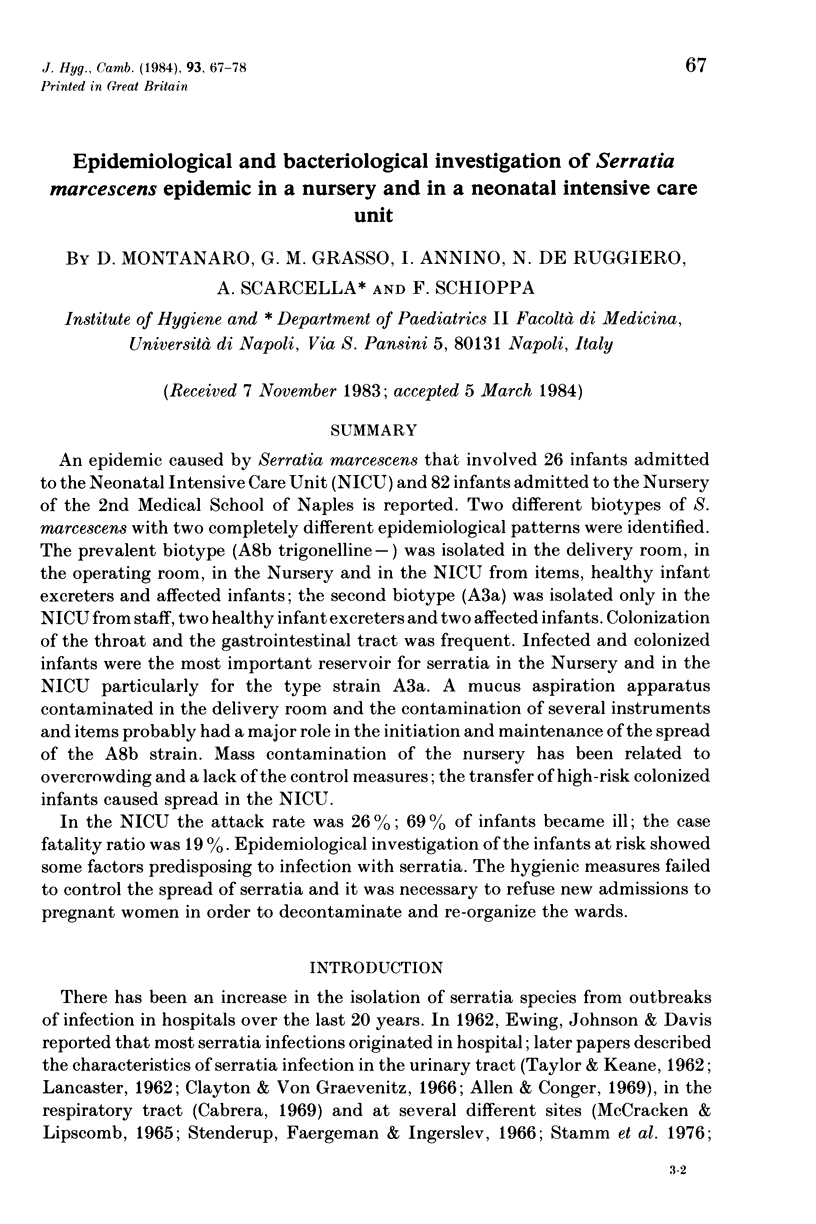
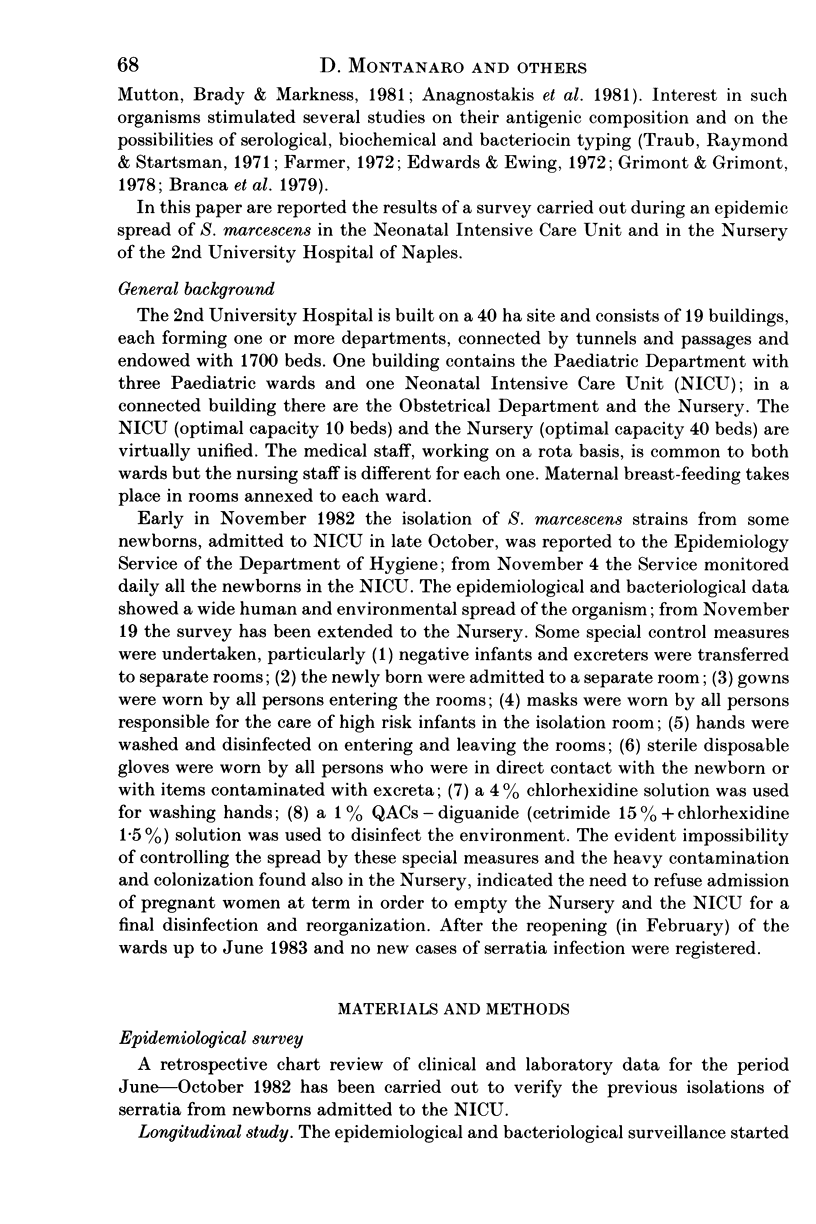
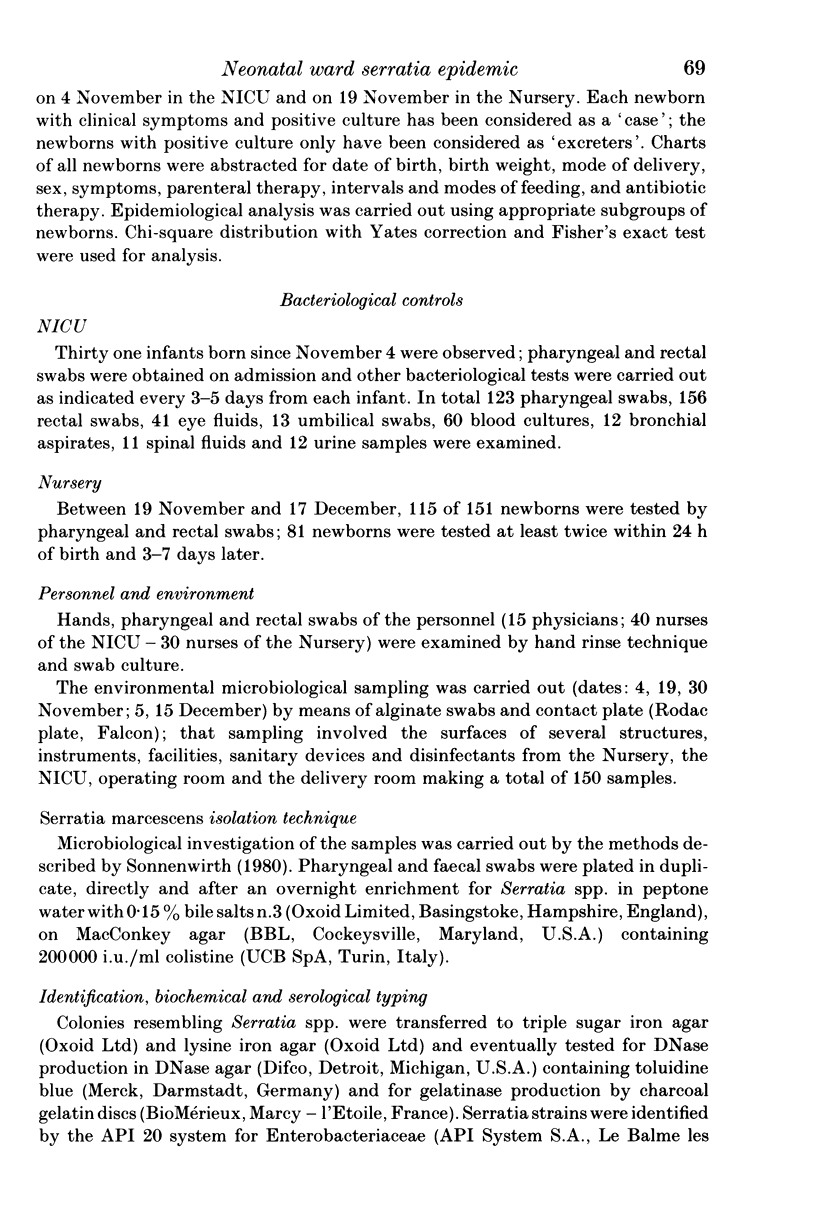
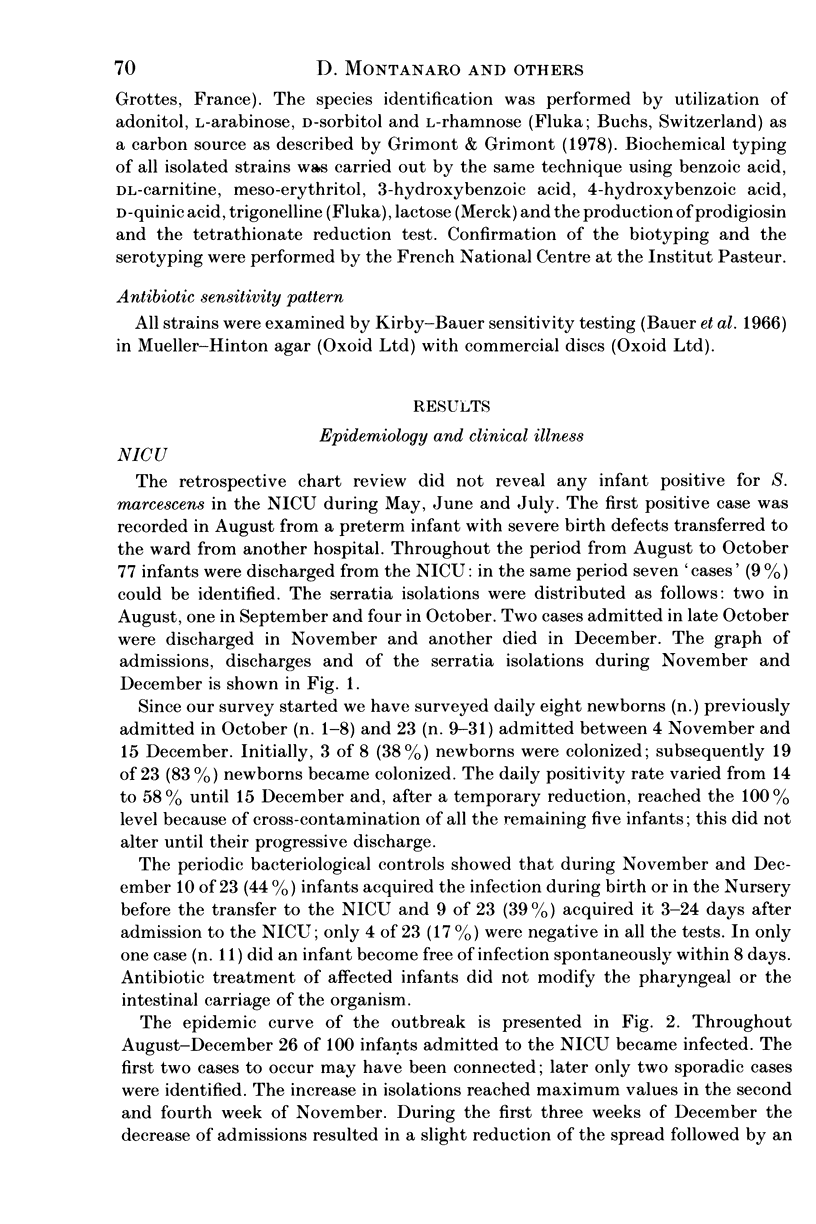
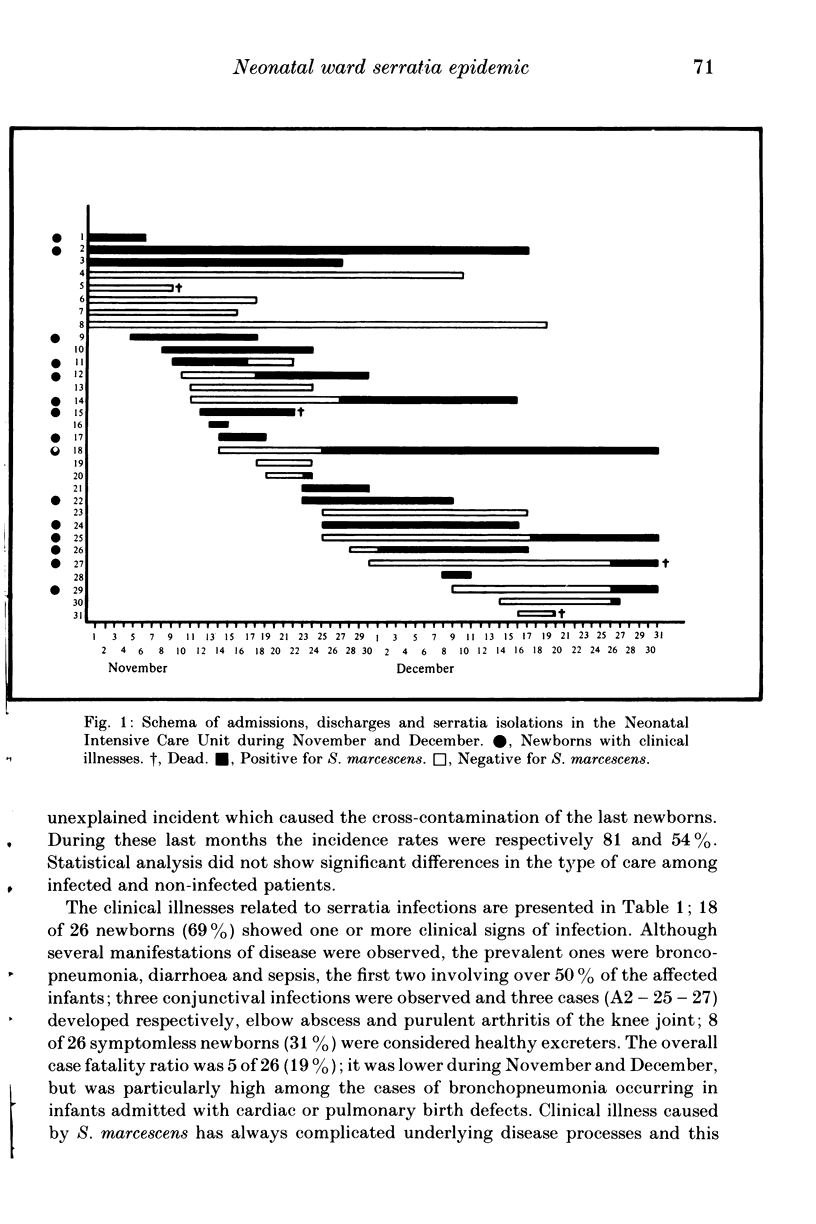
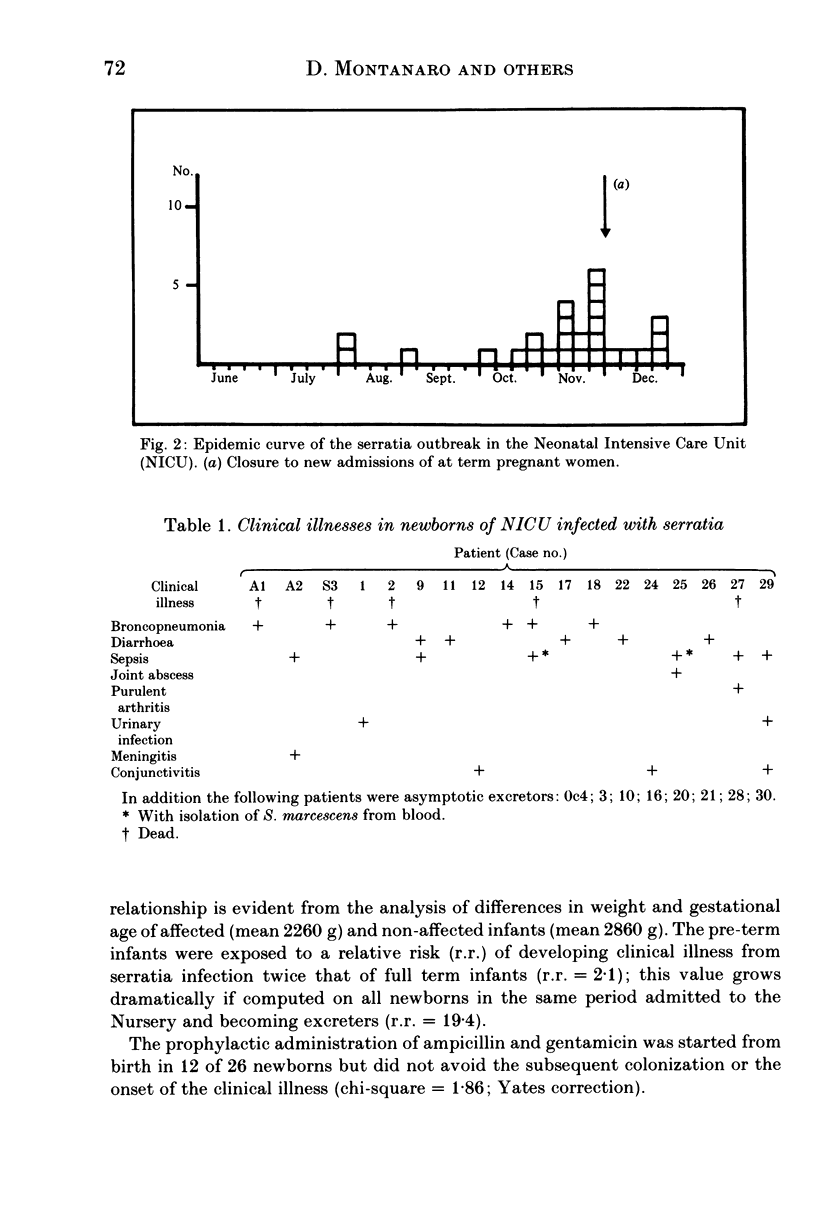
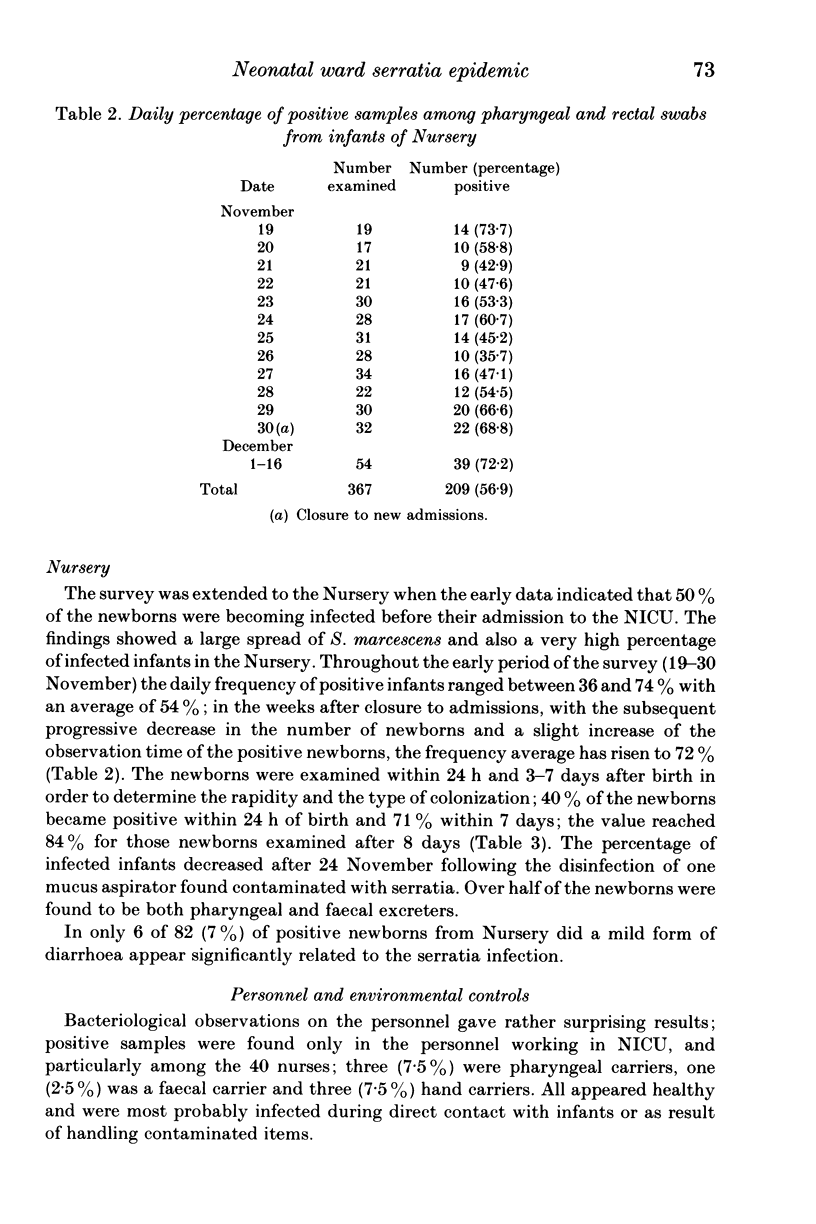
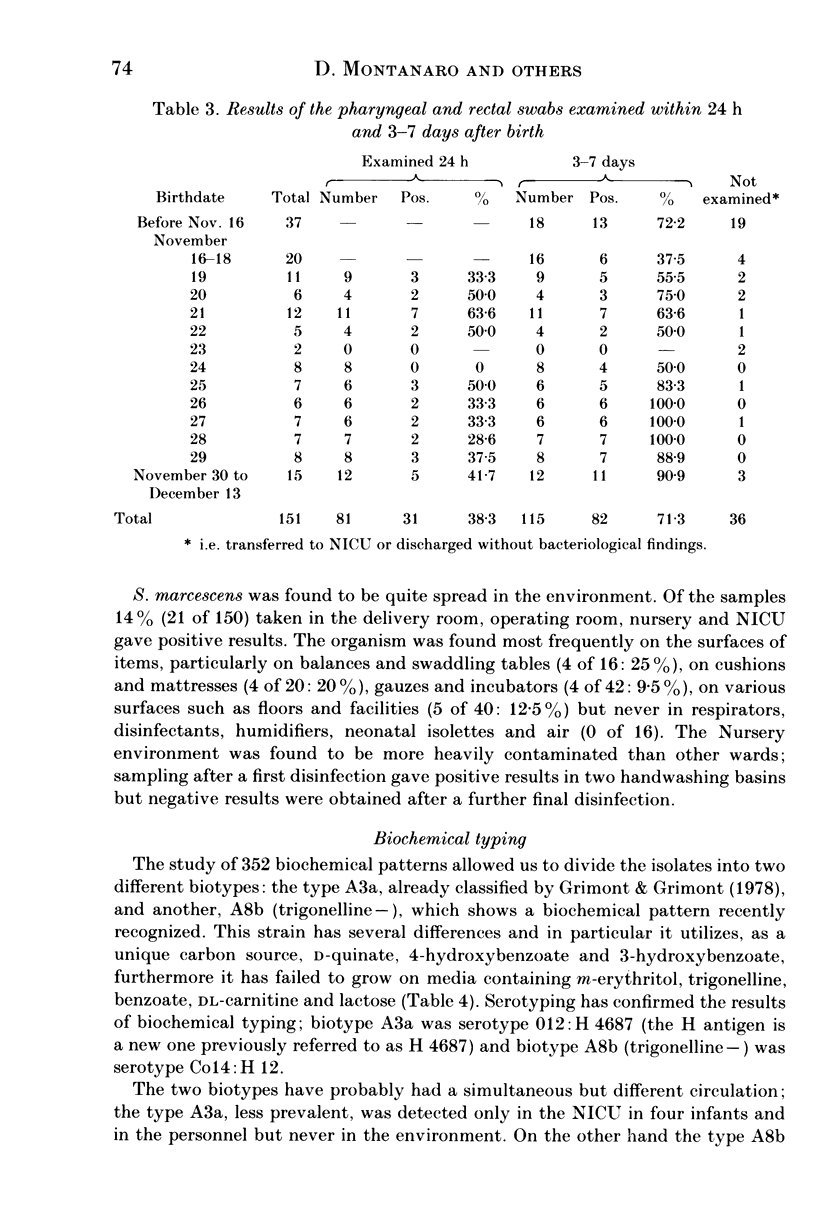
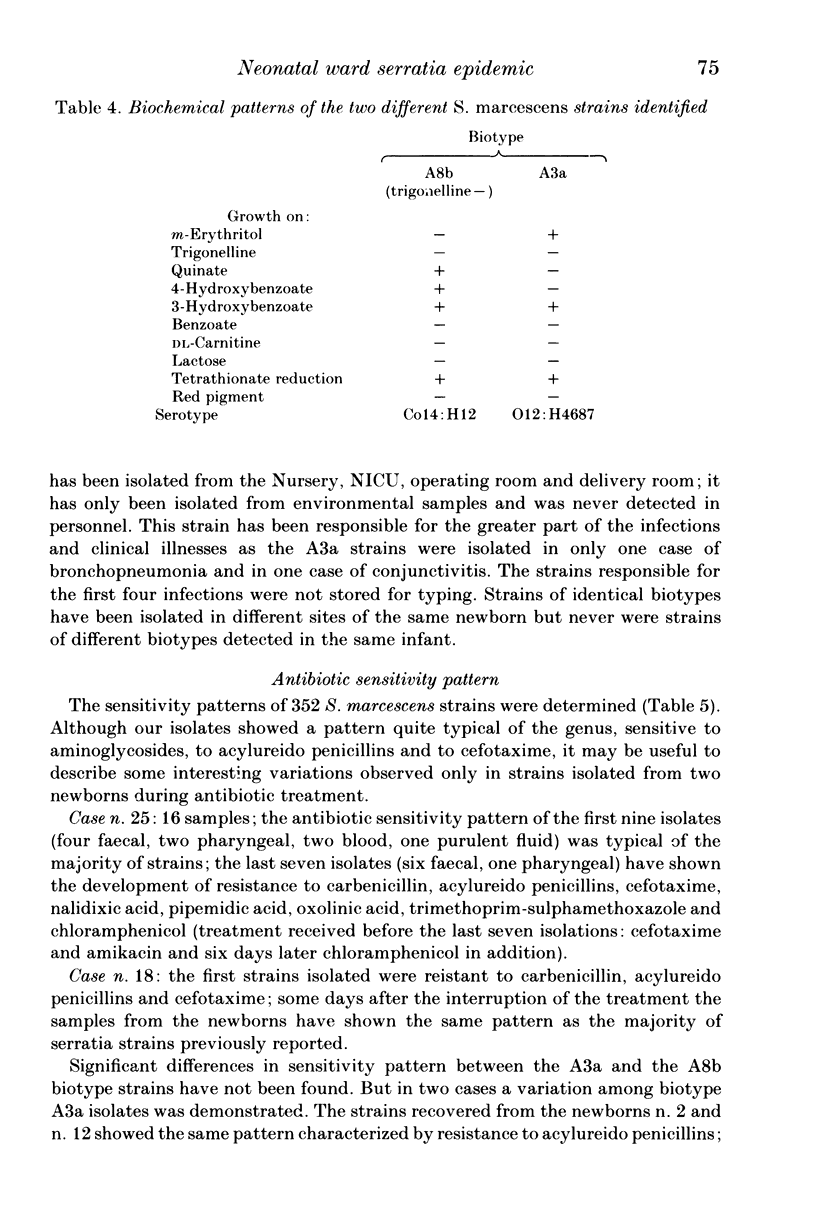
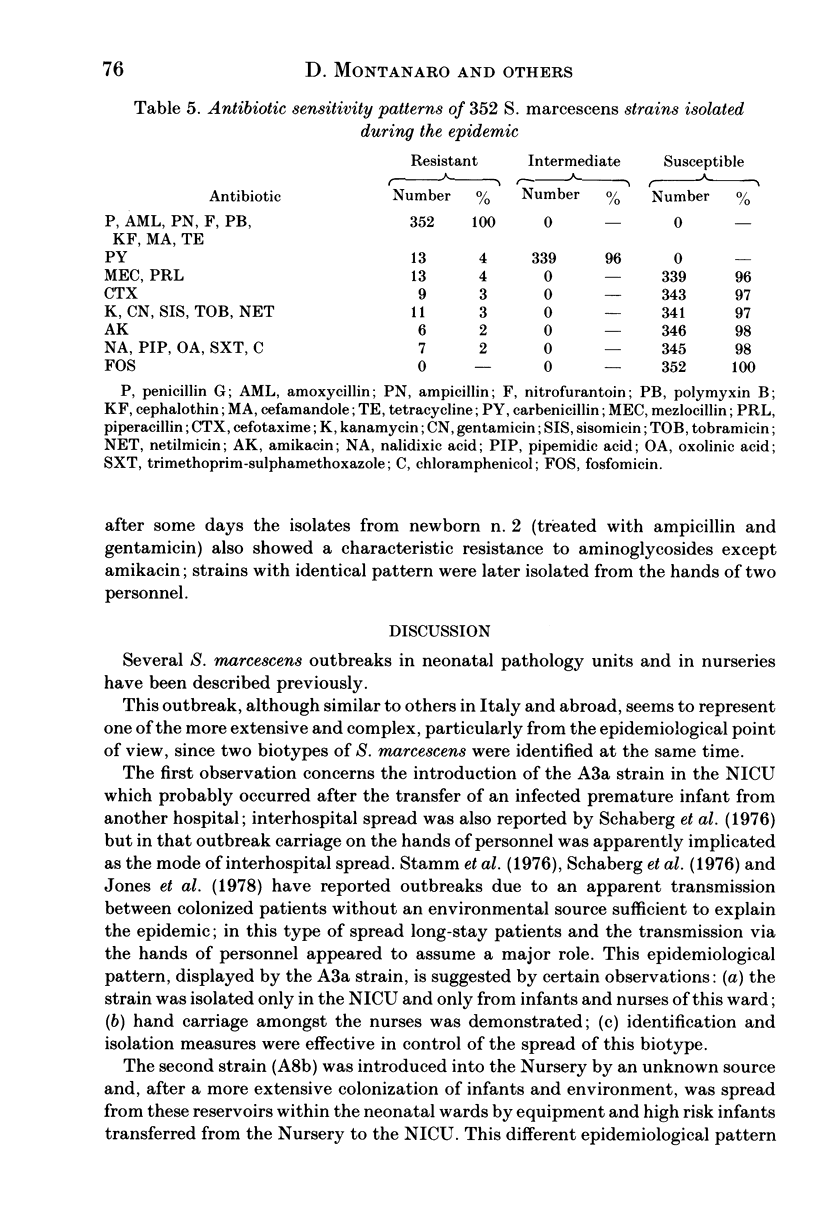
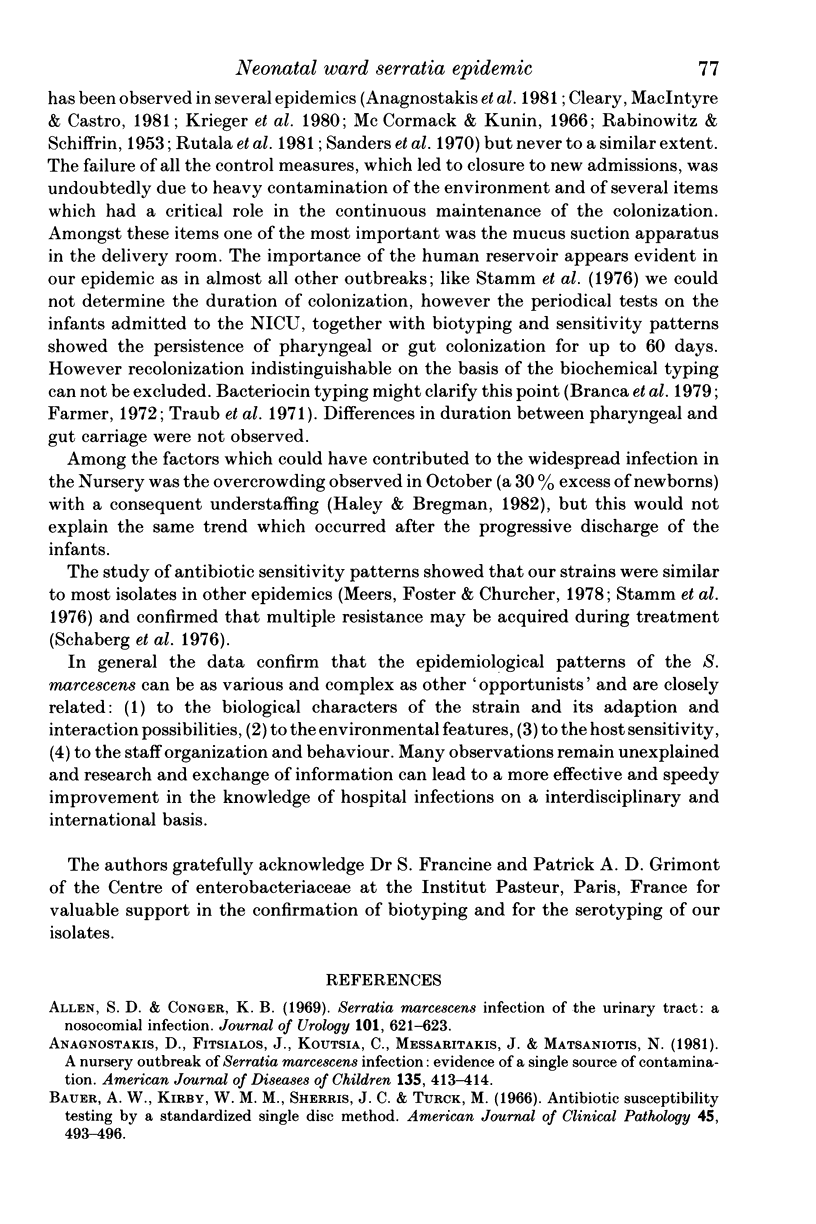
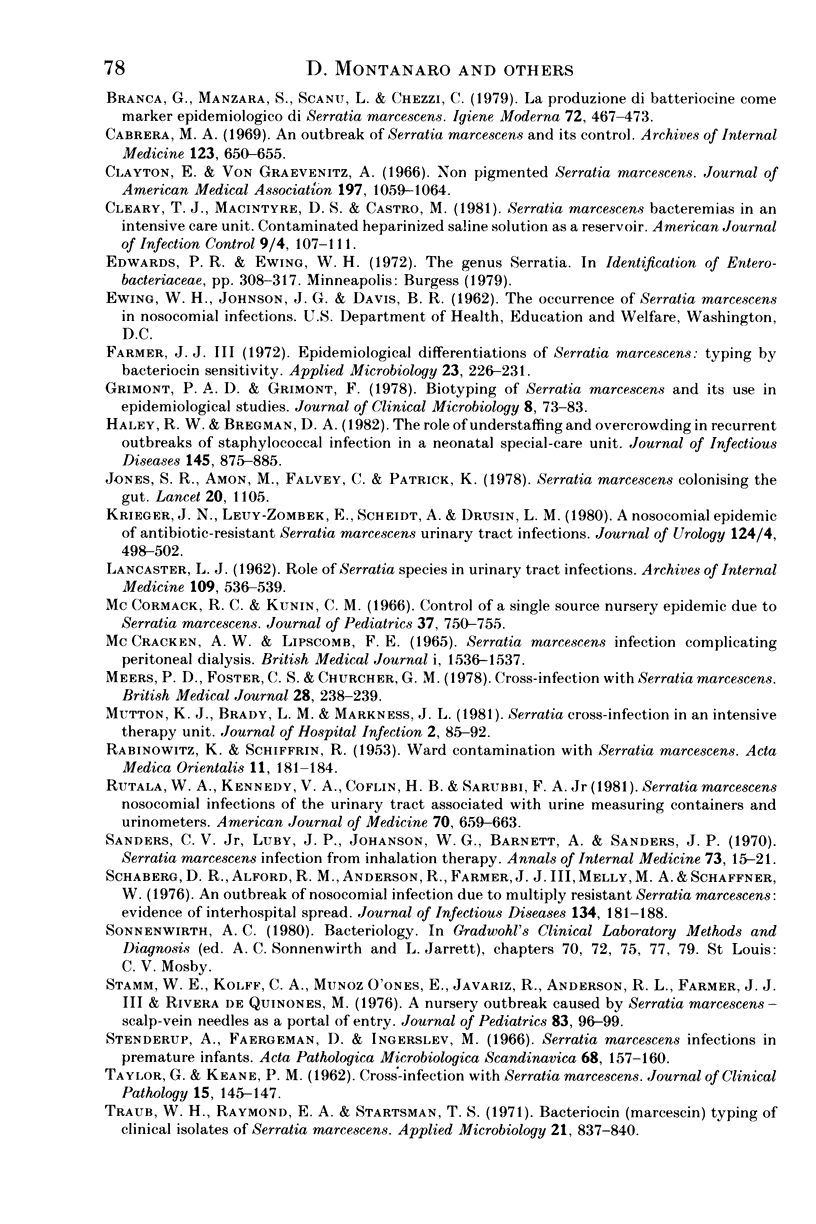
Selected References
These references are in PubMed. This may not be the complete list of references from this article.
- Allen S. D., Conger K. B. Serratia marcescens infection of the urinary tract: a nosocomial infection. J Urol. 1969 Apr;101(4):621–623. doi: 10.1016/s0022-5347(17)62391-7. [DOI] [PubMed] [Google Scholar]
- Anagnostakis D., Fitsialos J., Koutsia C., Messaritakis J., Matsaniotis N. A nursery outbreak of Serratia marcescens infection. Evidence of a single source of contamination. Am J Dis Child. 1981 May;135(5):413–414. doi: 10.1001/archpedi.1981.02130290011005. [DOI] [PubMed] [Google Scholar]
- Bauer A. W., Kirby W. M., Sherris J. C., Turck M. Antibiotic susceptibility testing by a standardized single disk method. Am J Clin Pathol. 1966 Apr;45(4):493–496. [PubMed] [Google Scholar]
- Cabrera H. A. An outbreak of Serratia marcescens, and its control. Arch Intern Med. 1969 Jun;123(6):650–655. [PubMed] [Google Scholar]
- Clayton E., Von Graevenitz A. Nonpigmented Serratia marcescens. JAMA. 1966 Sep 26;197(13):1059–1064. [PubMed] [Google Scholar]
- Farmer J. J., 3rd Epidemiological differentiation of Serratia marcescens: typing by bacteriocin sensitivity. Appl Microbiol. 1972 Feb;23(2):226–231. doi: 10.1128/am.23.2.226-231.1972. [DOI] [PMC free article] [PubMed] [Google Scholar]
- Grimont P. A., Grimont F. Biotyping of Serratia marcescens and its use in epidemiological studies. J Clin Microbiol. 1978 Jul;8(1):73–83. doi: 10.1128/jcm.8.1.73-83.1978. [DOI] [PMC free article] [PubMed] [Google Scholar]
- Jones S. R., Amon M., Falvey C., Patrick K. Serratia marcescens colonising the gut. Lancet. 1978 May 20;1(8073):1105–1105. doi: 10.1016/s0140-6736(78)90955-8. [DOI] [PubMed] [Google Scholar]
- Krieger J. N., Levy-Zombek E., Scheidt A., Drusin L. M. A nosocomial epidemic of antibiotic-resistant Serratia marcescens urinary tract infections. J Urol. 1980 Oct;124(4):498–502. doi: 10.1016/s0022-5347(17)55511-1. [DOI] [PubMed] [Google Scholar]
- LANCASTER L. J. Role of Serratia species in urinary tract infections. Arch Intern Med. 1962 May;109:536–539. doi: 10.1001/archinte.1962.03620170034005. [DOI] [PubMed] [Google Scholar]
- MCCRACKEN A. W., LIPSCOMB F. E. SERRATIA MARCESCENS INFECTION COMPLICATING PERITONEAL DIALYSIS. Br Med J. 1965 Jun 12;1(5449):1536–1537. doi: 10.1136/bmj.1.5449.1536. [DOI] [PMC free article] [PubMed] [Google Scholar]
- McCormack R. C., Kunin C. M. Control of a single source nursery epidemic due to Serratia marcescens. Pediatrics. 1966 May;37(5):750–755. [PubMed] [Google Scholar]
- Meers P. D., Foster C. S., Churcher G. M. Cross-infection with Serratia marcescens. Br Med J. 1978 Jan 28;1(6107):238–239. doi: 10.1136/bmj.1.6107.238-d. [DOI] [PMC free article] [PubMed] [Google Scholar]
- Mutton K. J., Brady L. M., Harkness J. L. Serratia cross-infection in an intensive therapy unit. J Hosp Infect. 1981 Mar;2(1):85–91. doi: 10.1016/0195-6701(81)90010-4. [DOI] [PubMed] [Google Scholar]
- RABINOWITZ K., SCHIFFRIN R. A ward-contamination by Serratia marcescens. Acta Med Orient. 1952 Oct;11(10):181–184. [PubMed] [Google Scholar]
- Rutala W. A., Kennedy V. A., Loflin H. B., Sarubbi F. A., Jr Serratia marcescens nosocomial infections of the urinary tract associated with urine measuring containers and urinometers. Am J Med. 1981 Mar;70(3):659–663. doi: 10.1016/0002-9343(81)90592-1. [DOI] [PubMed] [Google Scholar]
- Sanders C. V., Jr, Luby J. P., Johanson W. G., Jr, Barnett J. A., Sanford J. P. Serratia marcescens infections from inhalation therapy medications: nosocomial outbreak. Ann Intern Med. 1970 Jul;73(1):15–21. doi: 10.7326/0003-4819-73-1-15. [DOI] [PubMed] [Google Scholar]
- Schaberg D. R., Alford R. H., Anderson R., Farmer J. J., 3rd, Melly M. A., Schaffner W. An outbreak of nosocomial infection due to multiply resistant Serratia marcescens: evidence of interhospital spread. J Infect Dis. 1976 Aug;134(2):181–188. doi: 10.1093/infdis/134.2.181. [DOI] [PubMed] [Google Scholar]
- Stamm W. E., Kolff C. A., Dones E. M., Javariz R., Anderson R. L., Farmer J. J., 3rd, de Quinones H. R. A nursery outbreak caused by Serratia marcescens--scalp-vein needles as a portal of entry. J Pediatr. 1976 Jul;89(1):96–99. doi: 10.1016/s0022-3476(76)80940-7. [DOI] [PubMed] [Google Scholar]
- Stenderup A., Faergeman O., Ingerslev M. Serratia marcescens infections in premature infants. Acta Pathol Microbiol Scand. 1966;68(1):157–160. doi: 10.1111/apm.1966.68.1.157. [DOI] [PubMed] [Google Scholar]
- TAYLOR G., KEANE P. M. Cross-infection with Serratia marcescens. J Clin Pathol. 1962 Mar;15:145–147. doi: 10.1136/jcp.15.2.145. [DOI] [PMC free article] [PubMed] [Google Scholar]
- Traub W. H., Raymond E. A., Startsman T. S. Bacteriocin (Marcescin) typing of clinical isolates of Serratia marcescens. Appl Microbiol. 1971 May;21(5):837–840. doi: 10.1128/am.21.5.837-840.1971. [DOI] [PMC free article] [PubMed] [Google Scholar]


